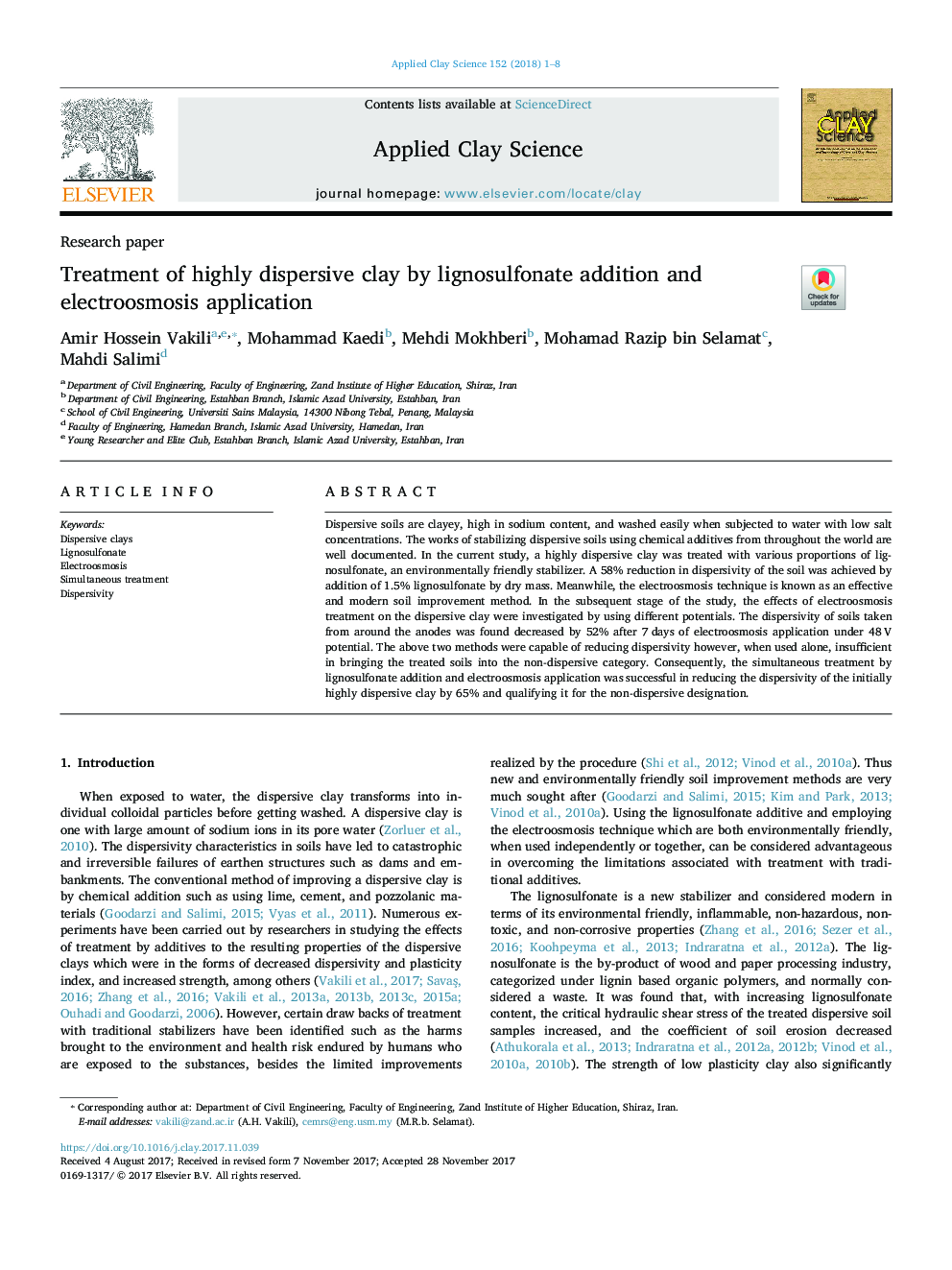| Article ID | Journal | Published Year | Pages | File Type |
|---|---|---|---|---|
| 8046273 | Applied Clay Science | 2018 | 8 Pages |
Abstract
Dispersive soils are clayey, high in sodium content, and washed easily when subjected to water with low salt concentrations. The works of stabilizing dispersive soils using chemical additives from throughout the world are well documented. In the current study, a highly dispersive clay was treated with various proportions of lignosulfonate, an environmentally friendly stabilizer. A 58% reduction in dispersivity of the soil was achieved by addition of 1.5% lignosulfonate by dry mass. Meanwhile, the electroosmosis technique is known as an effective and modern soil improvement method. In the subsequent stage of the study, the effects of electroosmosis treatment on the dispersive clay were investigated by using different potentials. The dispersivity of soils taken from around the anodes was found decreased by 52% after 7Â days of electroosmosis application under 48Â V potential. The above two methods were capable of reducing dispersivity however, when used alone, insufficient in bringing the treated soils into the non-dispersive category. Consequently, the simultaneous treatment by lignosulfonate addition and electroosmosis application was successful in reducing the dispersivity of the initially highly dispersive clay by 65% and qualifying it for the non-dispersive designation.
Related Topics
Physical Sciences and Engineering
Earth and Planetary Sciences
Geochemistry and Petrology
Authors
Amir Hossein Vakili, Mohammad Kaedi, Mehdi Mokhberi, Mohamad Razip bin Selamat, Mahdi Salimi,
